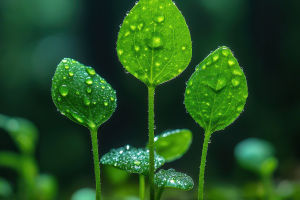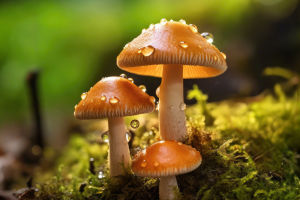You're not alone if you've ever excitedly brought home a leafy green friend, only to watch it slowly droop, brown, and give up.
Choosing indoor plants isn't just about picking the prettiest pot or most popular trend—it's about matching the right plant with your living space and lifestyle.
The key to success lies in understanding how light, humidity, and care levels shape a plant's ability to thrive. If you often wonder why some people seem to have a jungle in their living room while your fern barely survives a month, this guide is for you.
Light: The Dealbreaker for Most Plants
Light is the first and often most misunderstood factor when choosing indoor plants. Many plant deaths can be traced back to one thing: poor lighting.
1. Low-light spaces: Think of rooms with small windows or areas far from natural light. Great choices include snake plant, ZZ plant, and pothos. These plants can handle lower light levels and are more forgiving if you forget them now and then.
2. Bright, indirect light: This is the "sweet spot" most houseplants love—rooms with large windows, but no harsh midday sun. Perfect picks are peace lilies, rubber plants, and philodendrons.
3. Direct sunlight spots: South-facing windows that get full sun for hours? Go for succulents, cacti, or fiddle-leaf figs. These sun-lovers need a strong dose of rays to stay healthy.
Tip: Use the shadow test. Place your hand near the wall during the day. A strong shadow = bright light. A faint one = medium. No shadow = low light.
Match Plants to Your Care Style
Are you someone who forgets to water until leaves fall off? Or do you hover, misting and watering every two days? Your routine matters just as much as lighting.
1. Low-maintenance plants: If you travel often or tend to forget, look for drought-tolerant varieties like ZZ plant, aloe vera, or jade plant. These store water in their leaves and survive with neglect.
2. High-humidity lovers: Live in a naturally humid environment or love using a humidifier? Try ferns, calatheas, or peace lilies, which crave moisture in the air.
3. Daily attention seekers: Want a hands-on plant relationship? Fiddle-leaf figs and string of pearls are gorgeous but require consistent care and attention to thrive.
Knowing your habits is crucial. You're not "bad with plants"—you just may not have found your perfect match yet.
Pets and Plants: Safety First
If you share your home with cats or dogs, plant choice isn't just about aesthetics. Many popular houseplants can be toxic if ingested.
1. Pet-safe options: Choose areca palms, calathea, prayer plants, and baby rubber plants. These are generally considered safe for furry companions.
2. Common toxic plants to avoid: Philodendron, pothos, peace lilies, and sago palm. These can cause vomiting or more serious issues if nibbled on.
Consider the Growth Habit and Size
It's tempting to buy that lush monstera in the nursery, but consider where it will live long-term.
1. Compact spaces: For desks, bookshelves, or small apartments, go with succulents, peperomia, or air plants. They stay manageable and need minimal room.
2. Vertical growth: If you want drama without taking up floor space, snake plants and rubber trees grow tall, not wide.
3. Trailing beauties: Plants like pothos, string of hearts, or English ivy look stunning in hanging baskets or on shelves where they can cascade freely.
Plants grow—some faster than you expect. Make sure your space allows for that growth, or be prepared to prune.
Skip the Trends—Choose What Works
Every year, some plant becomes the star of Instagram. But that doesn't mean it'll work in your home. Fiddle-leaf figs and monstera deliciosa may be stylish, but they also come with finicky needs. Ask yourself:
• Do I have the light this plant needs?
• Will I remember to water it properly?
• Do I want something decorative or functional (like air-purifying abilities)?
Trendy plants may draw you in, but long-term satisfaction comes from finding something that fits you.
Get It Right from the Start
Before you even bring a plant home, think through the essentials:
• Where will it go? Think location, not just for looks, but for light and airflow.
• What pot will it live in? Ensure there are drainage holes—plants don't like sitting in water.
• How will I water it? A watering can with a narrow spout helps control how much water reaches the soil.
And finally, start small. Try one or two easy-care plants and see how they respond. You'll learn more by observing a live plant than reading dozens of care sheets.
Final Thoughts: Plants Are Partners
Living with plants isn't just about decoration—it's about forming a small, quiet partnership. They'll respond to your space and your habits, and you'll slowly learn their needs. Think of it less like buying a product and more like starting a new relationship.
What's your biggest indoor plant struggle? Have you found one that just "clicked"? Share your experience—we all learn from each other's plant journeys.


